February 7 is National Black HIV/AIDS Awareness Day, which recognizes the disproportionate impact of the HIV/AIDS epidemic on Black communities and individuals across the U.S. Black people accounted for 39% of people living with HIV (PLWH) and 38% of new HIV diagnoses in the U.S. in 2022, despite only representing 12% of the U.S. population. Black men had the highest rate of new HIV diagnoses among men of all races/ethnicities in 2022. Similarly, Black women had the highest rate of new HIV diagnoses among women of all races/ethnicities in 2022. Additionally, young Black people accounted for half of all new HIV diagnoses among youth in 2022.
Despite representing the highest percentage of PLWH and number of new diagnoses among all races/ethnicities, Black people accounted for the lowest percentage (14%) of PrEP users in 2023. Black people also have the lowest PrEP-to-Need Ratio (PnR), meaning that they experience the greatest unmet need for PrEP. Despite the barriers faced by Black people and communities, Black people represented the highest percentage of any demographic group to be tested for HIV at least once in their lifetime in 2022.
Social determinants of health (SDOH) also play a large role in the impact of the HIV epidemic on Black communities. Black people living with HIV (PLWH) report feeling stigmatized due to their HIV status through personalized stigma, disclosure concerns, negative self-image, and perceived public attitudes about PLWH. Additionally, 22% of Black PLWH in the U.S. reported unstable housing or homelessness in 2022 – the highest percentage among all races/ethnicities.
On National Black HIV/AIDS Awareness Day, we recognize that now, more than ever, data is essential to understanding and ending the HIV epidemic. Access to this data allows researchers, advocates, and the public to understand how HIV/AIDS impacts the communities that they hold near and dear. At AIDSVu, we will continue to provide data that makes progress towards ending the HIV epidemic possible.
“Our role is to make sure there’s a transparent view, and to just keep shining that light,” said AIDSVu Principal Scientist and Emory University Professor Patrick Sullivan.
“Engage, Educate, Empower: Uniting to End HIV/AIDS in Black Communities.”
Explore our Resources
AIDSVu’s infographics encourage new ways of visualizing the HIV epidemic among Black communities. Share them on socials, print them out as one-pagers, and add them to your presentations.
The HIV Epidemic Among Black Communities
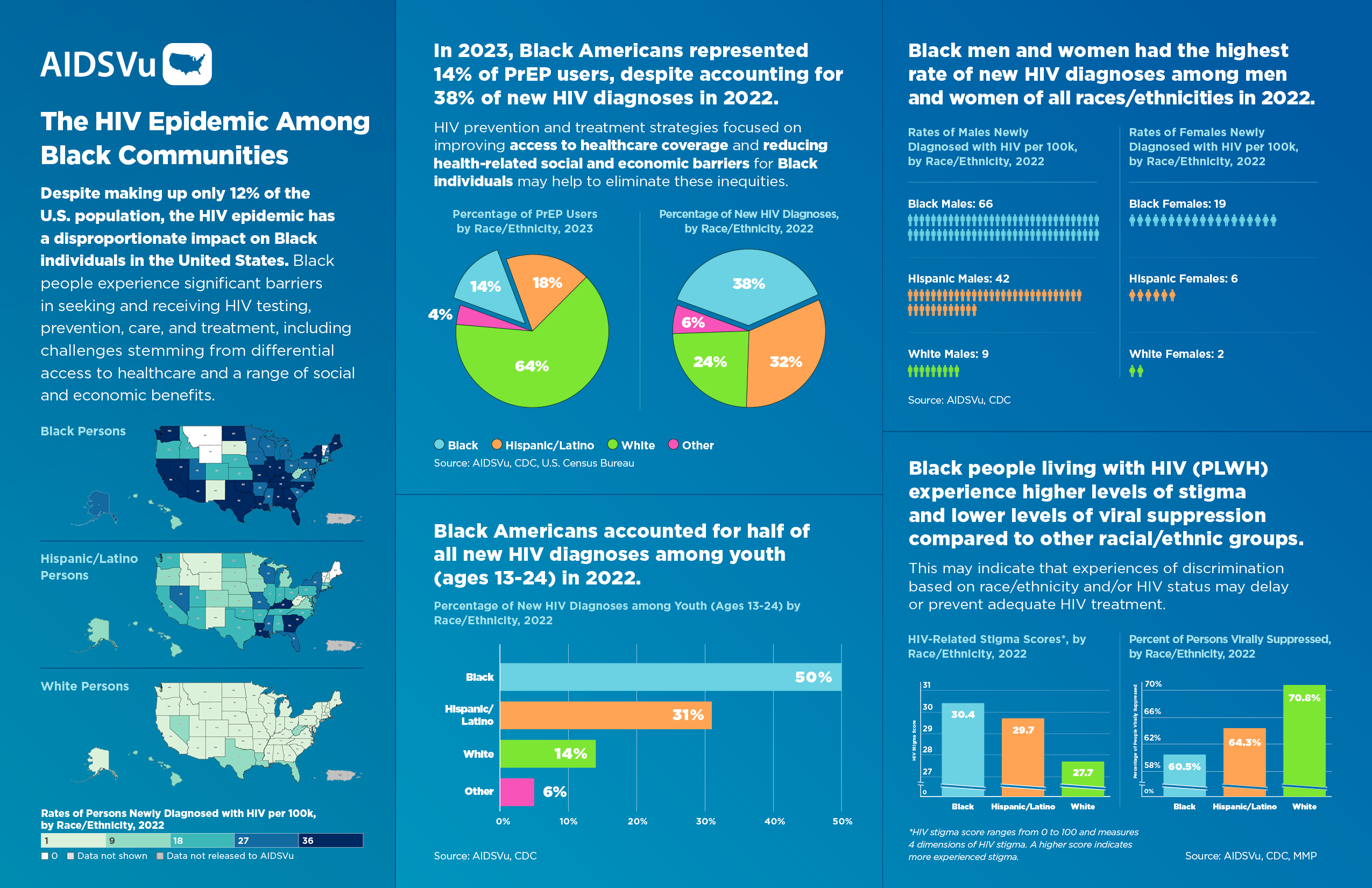
Racial/Ethnic Disparities and HIV
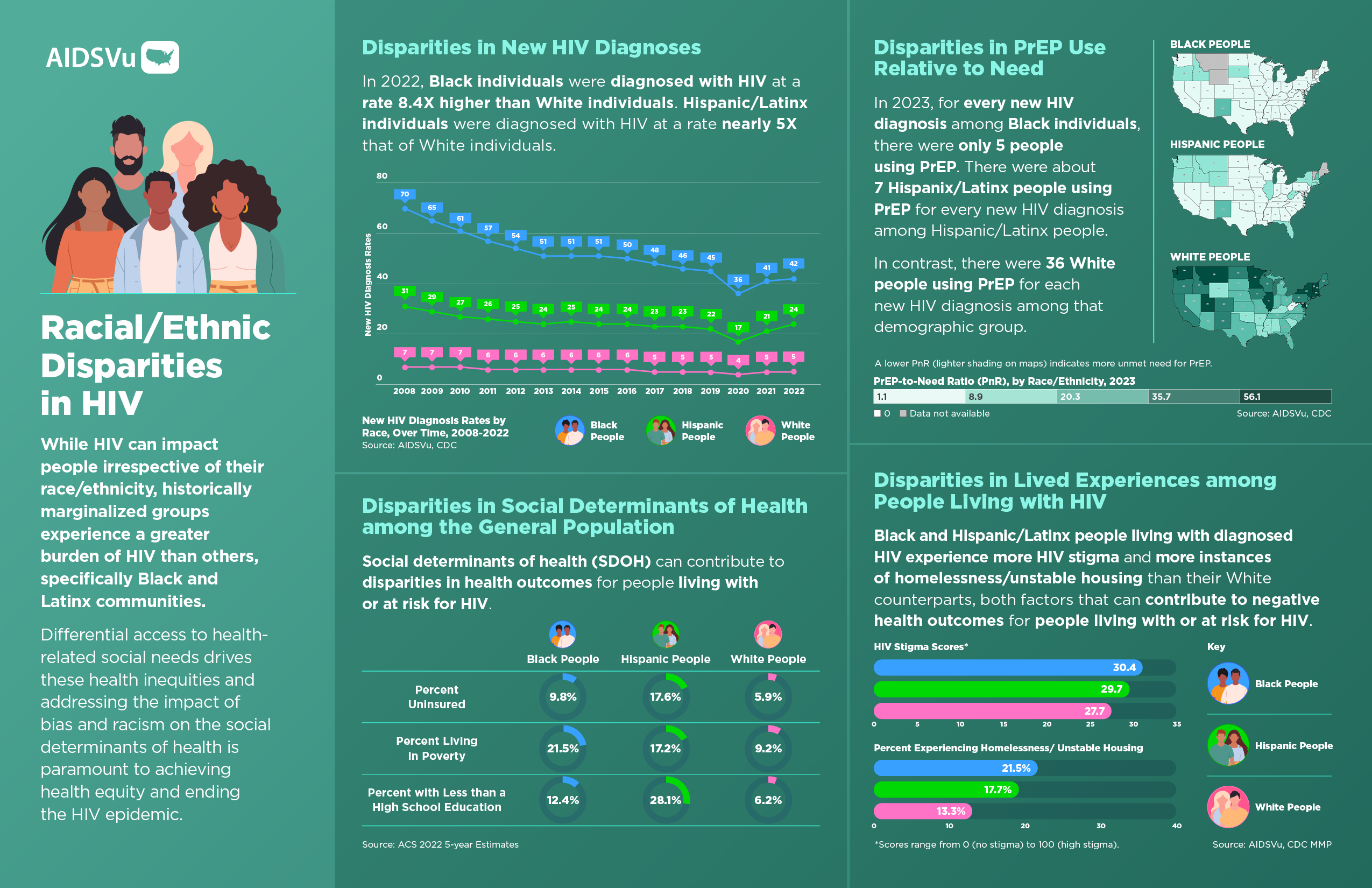
PrEP Use in Black Communities
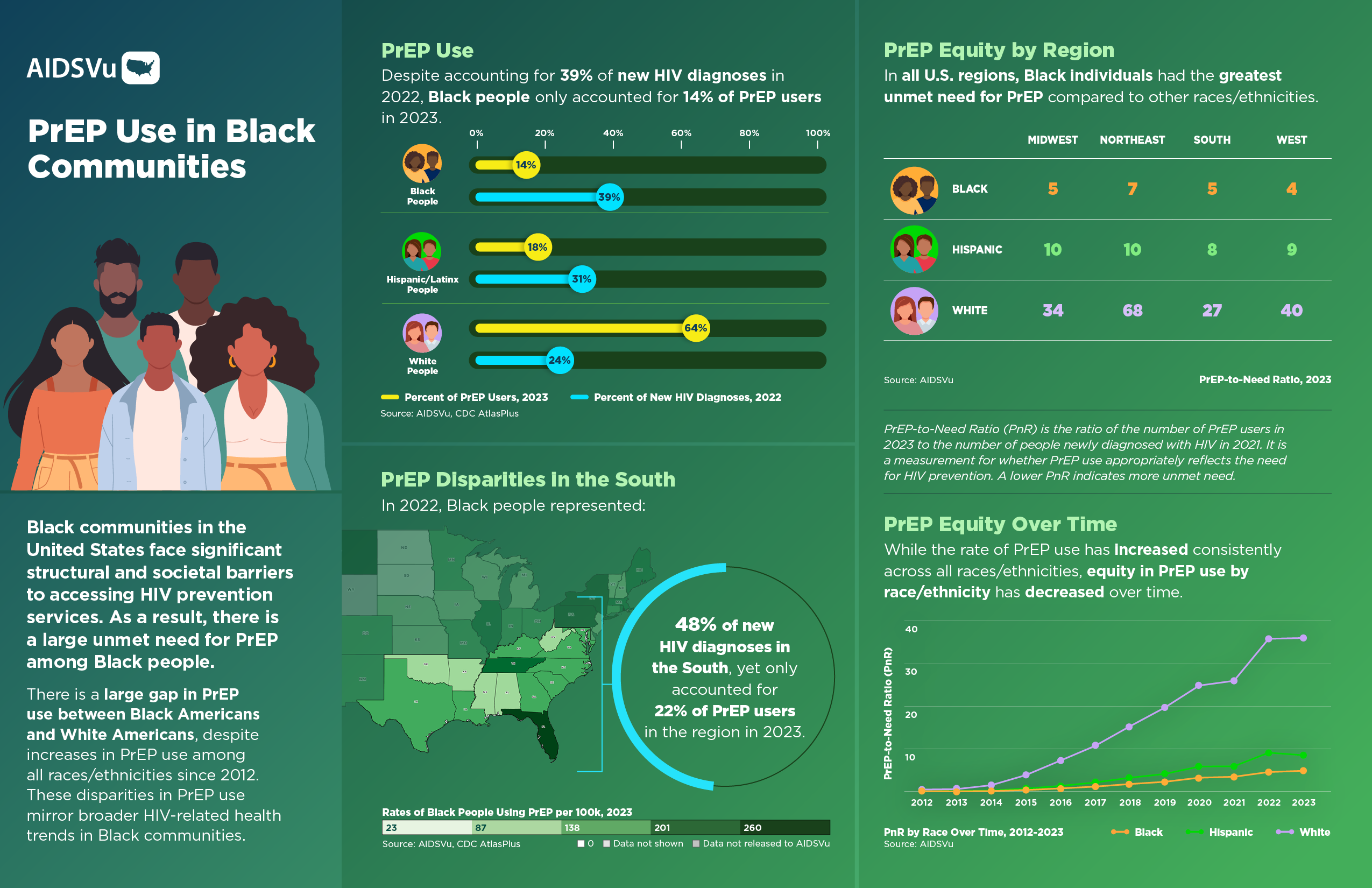
Black Women and PrEP
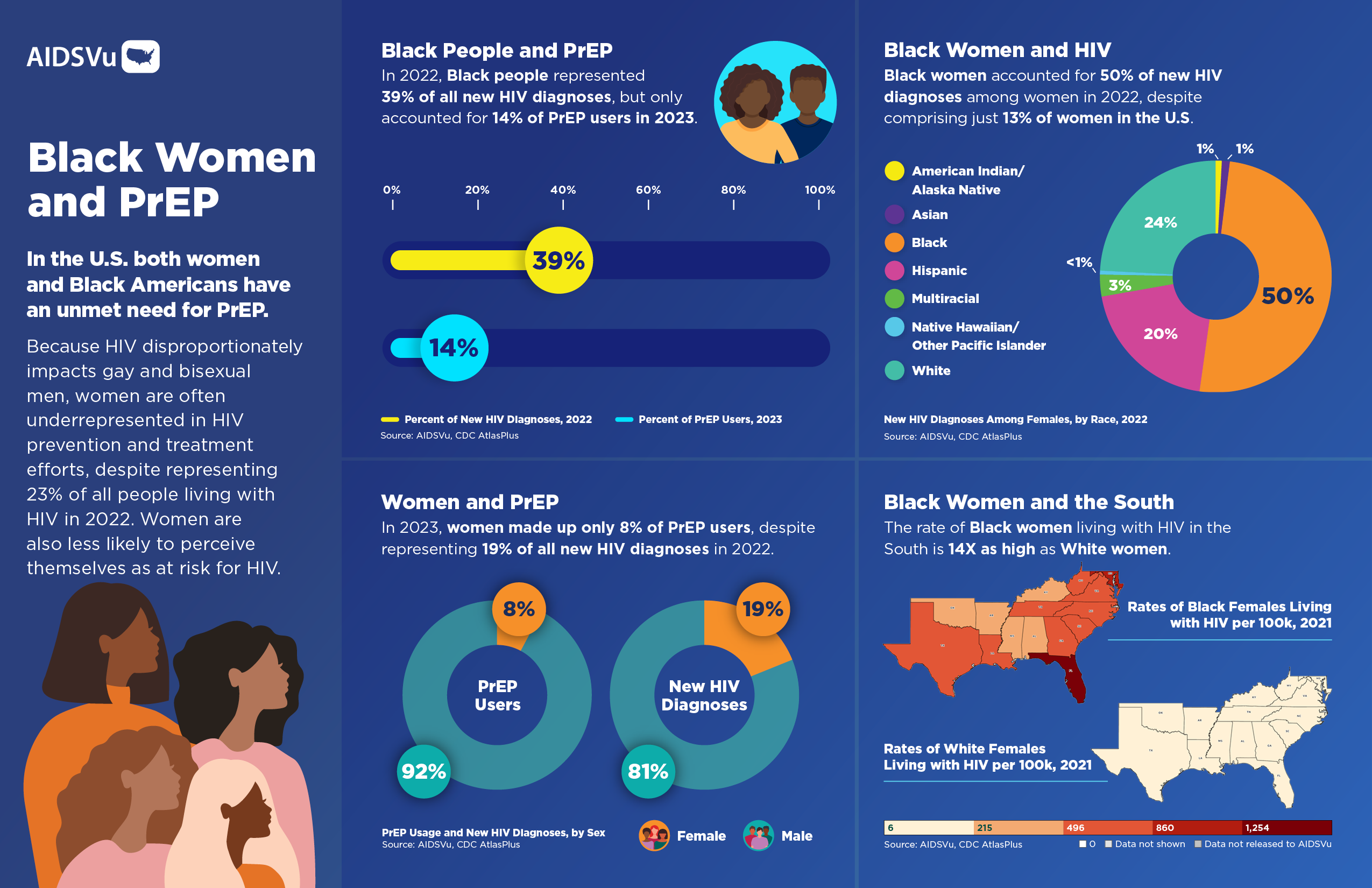

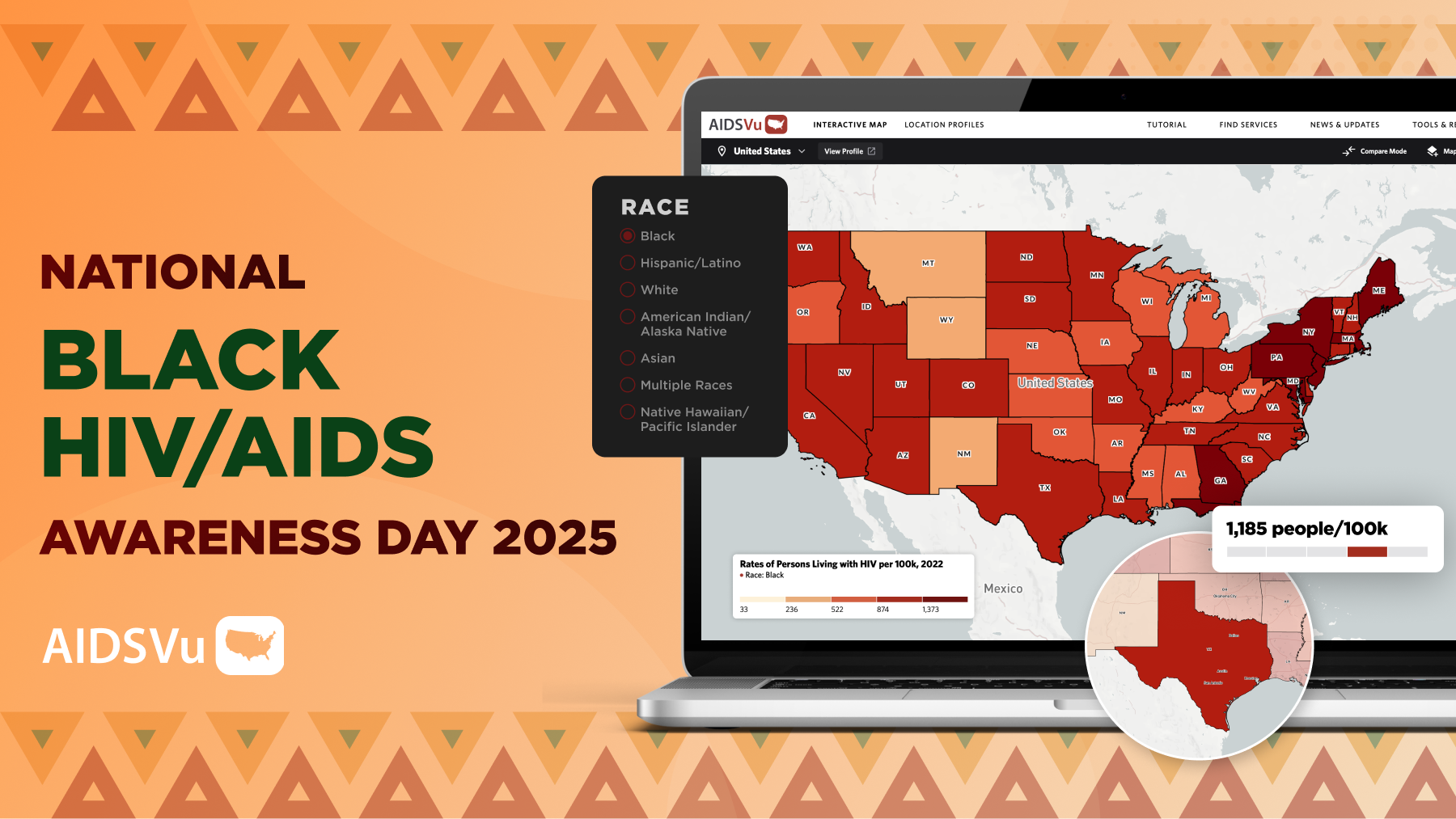
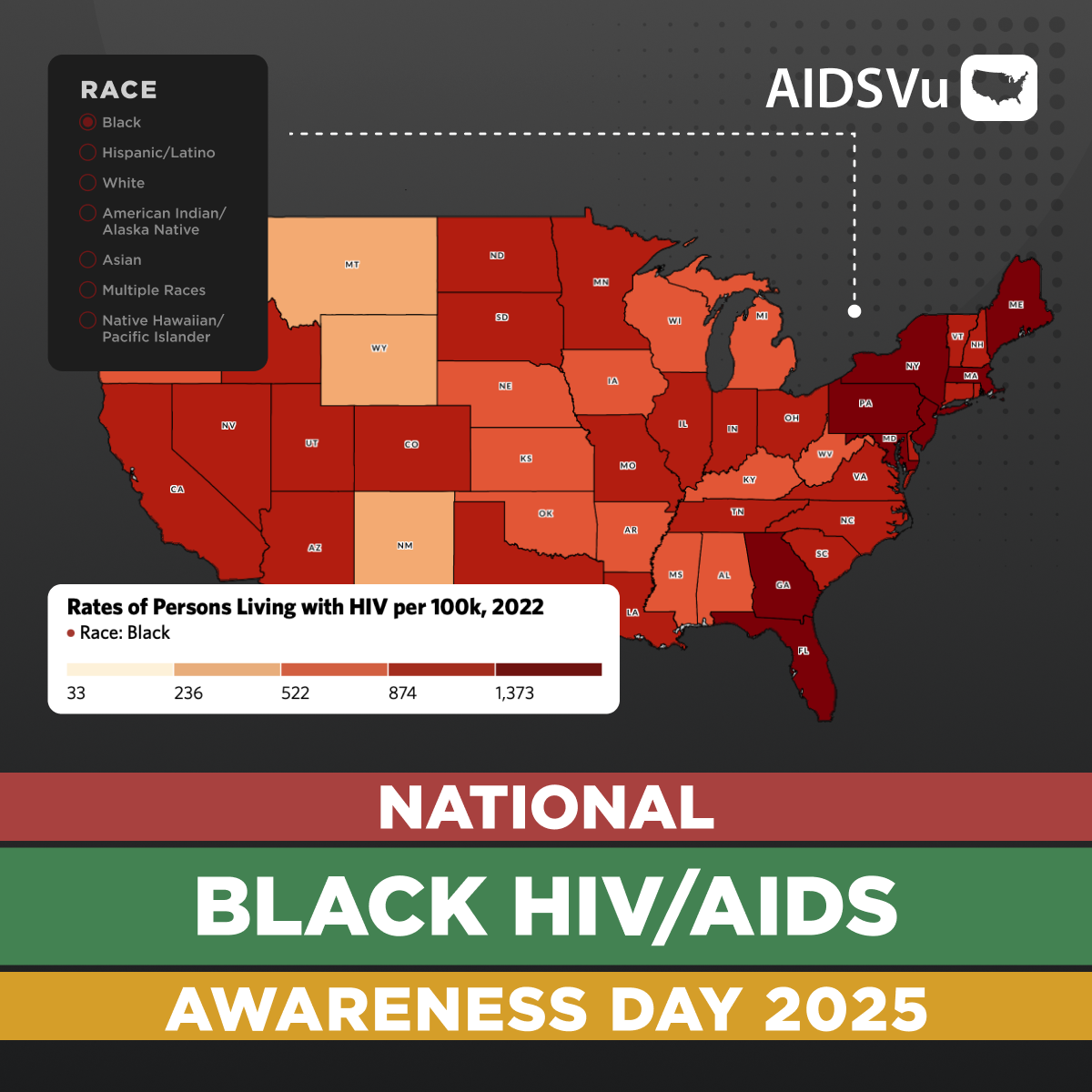




Share these social media posts and infographics on LinkedIn, X, and Facebook with #NBHAAD to help spark conversations about HIV among Black communities.
LinkedIn Post 1
February 7 is National Black HIV/AIDS Awareness Day—a time to highlight the unique challenges Black communities face in accessing #HIV care.
Among youth newly diagnosed with HIV in 2022, half were Black. Societal and structural barriers such as racism and unequal access to social and economic benefits drive these health disparities and highlight the need for action to ensure equitable care.
This #NBHAAD, learn more about HIV among Black communities and access shareable resources: https://aidsvu.org/resources/deeper-look-hiv-in-black-communities/
LinkedIn Post 2
#PrEP is a critical tool in preventing #HIV, especially for those at higher risk. However, Black Americans face barriers to PrEP access compared to other races/ethnicities.
Here’s what the data tells us:
National Black HIV/AIDS Awareness Day is a powerful moment to reflect and act. We must continue to engage, educate, and empower others while addressing the issues that hinder equitable access to HIV prevention and treatment services.
Learn more and explore resources here: https://prepvu.org/race-and-ethnicity/
LinkedIn Post 3
In 2022, Black individuals were diagnosed with HIV at a rate 8.4X higher than White individuals. Black communities experience a greater burden of #HIV due to systemic inequities fueled by bias, racism, and social determinants of health such as poverty, insurance status, and education.
This National Black HIV/AIDS Awareness Day let’s continue to advocate for change and dismantle these barriers. Learn more about how we can create a healthier, more equitable future.
https://aidsvu.org/resources/deeper-look-hiv-in-black-communities/
LinkedIn Post 4
#DYK? Black men and Black women had the highest rates of new #HIV diagnoses among all men and women of any race/ethnicity in 2022. Let’s commit to empowering others and working toward equitable access to preventative care and treatment for all. On National Black HIV/AIDS Awareness Day, take a moment to read more about the disparities faced by Black communities: https://aidsvu.org/national-black-hiv-aids-awareness-day-toolkit-2025/#NBHAAD
Twitter/X Post 1
February 7 is National Black HIV/AIDS Awareness Day. #DYK? In 2022, Black Americans accounted for half of all new HIV diagnoses among youth. Systemic inequities drive these disparities. Learn more + access resources: https://aidsvu.org/national-black-hiv-aids-awareness-day-toolkit-2025/
Twitter/X Post 2
#PrEP is critical in #HIV prevention, but equity gaps persist. In 2022, Black Americans made up 38% of new HIV diagnoses but only 14% of PrEP users in 2023. Learn more about barriers to access among Black communities: https://prepvu.org/race-and-ethnicity/
Twitter/X Post 3
In 2022, Black individuals were diagnosed with #HIV at a rate 8.4X higher than White individuals due to systemic inequities and social determinants of health. This National Black HIV/AIDS Awareness Day let’s advocate for change. https://aidsvu.org/national-black-hiv-aids-awareness-day-toolkit-2025/ #NBHAAD
Twitter/X Post 4
#DYK? Black men and women had the highest rates of new #HIV diagnoses among all races/ethnicities in 2022. Let’s empower our communities and work toward equal access to prevention and treatment for all. Learn more about HIV among Black communities: https://aidsvu.org/resources/deeper-look-hiv-in-black-communities/ #NBHAAD